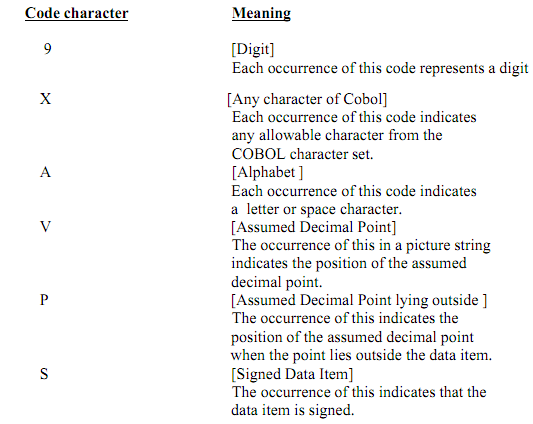Size:
The number of characters or digits needed to store the data item in the memory in termed as the Size of the data item.
All the 4 general characteristics explained can be specified through a PICTURE clause. The clause PICTURE is to be followed by a picture character string as shown below.

The character string can contain 1 to 30 code characters which define the above mentioned attributes of the elementary item. The code characters and meaning are shown below:

There is no exceptional code to indicate the size.
The total number of occurrence of 9, X or A in the picture string specifies the size.
The occurrence of V, P & S are not counted in determining the size of an item.
The permissible combinations are governed by the rules as shown below:
(i) In the case of an alphabetic item the picture may hold only the symbol A.
(ii) In the case of a numeric item the picture may hold only the symbols 9, V, P & S.
These are known as operational characters. It should hold at least one 9.
The symbols V and S can appear only once and S, if it is involved, should be the leftmost character of the picture string. The symbol P can be repetitive on the right or on left as many times as is needed to indicate the position of the assumed decimal point.
(iii) In the case of an alphanumeric item, the picture may hold all Xs or the combination of 9, A and X (except all 9 or all A). In the afterward case the item is considered as if the string holds of all Xs.
The picture clause is only to be specified for the elementary items; it cannot be used for a group item.
The size of a group item is equivalent to the total of the sizes of all the subordinate elementary items. The group item class is alphanumeric.